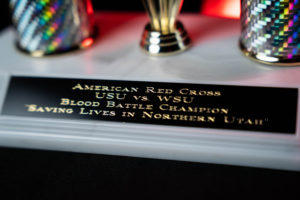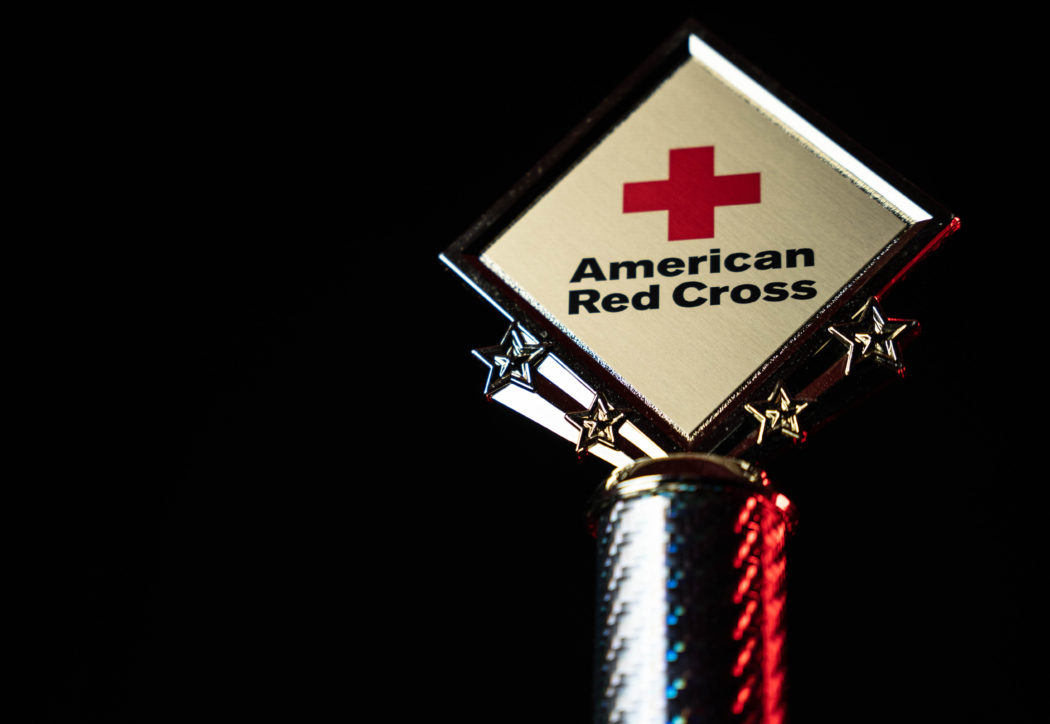USU out for blood again in annual blood drive competition
The annual blood drive competition between Utah State University and Weber State University is back.
This event, better known as the “blood battle,” is hosted by the American Red Cross and the Val R. Christensen Service Center and will take place in the Taggart Student Center lounges from Aug. 30 to Sept. 3. Donors can come anytime from 9 a.m to 8 p.m.
With a blood shortage in the United States right now, both USU and WSU are hoping that this competition will bring a lot of donations.
Shana Loomis, a spokesperson for American Red Cross, said they supply around 2,500 hospitals nationwide with blood every day. She said there will probably never be a point when they don’t need blood.
“The need for blood is constant, every two seconds someone in the United States is receiving a blood transfusion,” Loomis said.
For some students like Madison Shreve, a sophomore at USU, competition is exactly what she needs to push herself to donate blood.

“I think that the thought of beating WSU in anything is extremely appealing,” Shreve said. “Competition makes something that is uncomfortable for some, something that can be fun because you get to contribute. I think it’s a great idea to give students even more of a reason and motivation to donate.”
This will be the 18th annual blood battle between WSU and USU, which began in 2004. The American Red Cross has hosted it every year.
Nelda Ault-Dyslin, the director of the Val R. Christensen Service Center, also noted the importance of blood right now. “Like everything else, the pandemic canceled many blood drives that normally keep the U.S’s blood supply stocked,” she said. “The blood collected during this week stays in our region, and we can make a big impact.”
And with USU having won the past two competitions, there are high hopes for another successful year. This year, both USU and WSU have goals of collecting 1,000 units in five days.
For those who are nervous to donate, Loomis suggested focusing on the impact you’re making.
“Keep in mind that the reason that you’re there and what you’re doing,” she said. “There will be a point in your life that someone you know, if not yourself, is going to need a blood product.”
The hosts are hoping to see not only students but also faculty and staff members along with members of the community at the blood drive.
Free parking passes for Big Blue or Aggie Terraces will also be given to those community members who are willing to donate.
Those who are eligible to donate must be at least 17 years old — or 16 with parental consent in Utah — be in good health, haven’t donated blood in the last 56 days, and meet certain height and weight requirements depending on their age. All blood types are encouraged to donate and are needed.
Drink plenty of water before donating — drinking an extra 16 ounces of water is recommended — and eat lots of iron-rich types of foods such as red meat or poultry.
Loomis said preparing for the donation by drinking lots of water and eating a good meal prior, can also help ease nerves and help everything go quickly and smoothly.
Although Shreve herself can’t donate because of personal health reasons, she believes if you are eligible and able, then you should donate.
“It’s about thinking of someone other than yourself and it’s a way for us as students to help others in need,” Shreve said. “It saves lives and is so important.”
Walk-ins will be accepted, however, it is strongly encouraged to schedule an appointment, which can be done through the American Red Cross website at https://www.redcrossblood.org/.
As reported by Utah State Today, donors can also save time by completing a pre-donation reading and a health questionnaire by using RapidPass. This needs to be done on the day of their donation, prior to arrival.
Steps for RapidPass can be completed through the Blood Donor App or online at https://www.redcrossblood.org/donate-blood/manage-my-donations/rapidpass.html.
At the time of check-in, donors will need to make sure that they have their driver’s license, a blood donor card, or two other forms of identification.
Donors will receive a Blood Battle t-shirt and the winning school will be rewarded with the trophy to keep until the next competition.
Loomis mentioned donors can track their blood’s journey. Through the Red Cross donor app, donors can follow their blood from the moment they donate until it reaches its final destination.
For more insight, help overcoming possible nervousness, and a little extra inspiration to donate, watch this video at https://vimeo.com/449034306.
Jacee.caldwell@usu.edu
@JaceeCaldwell

